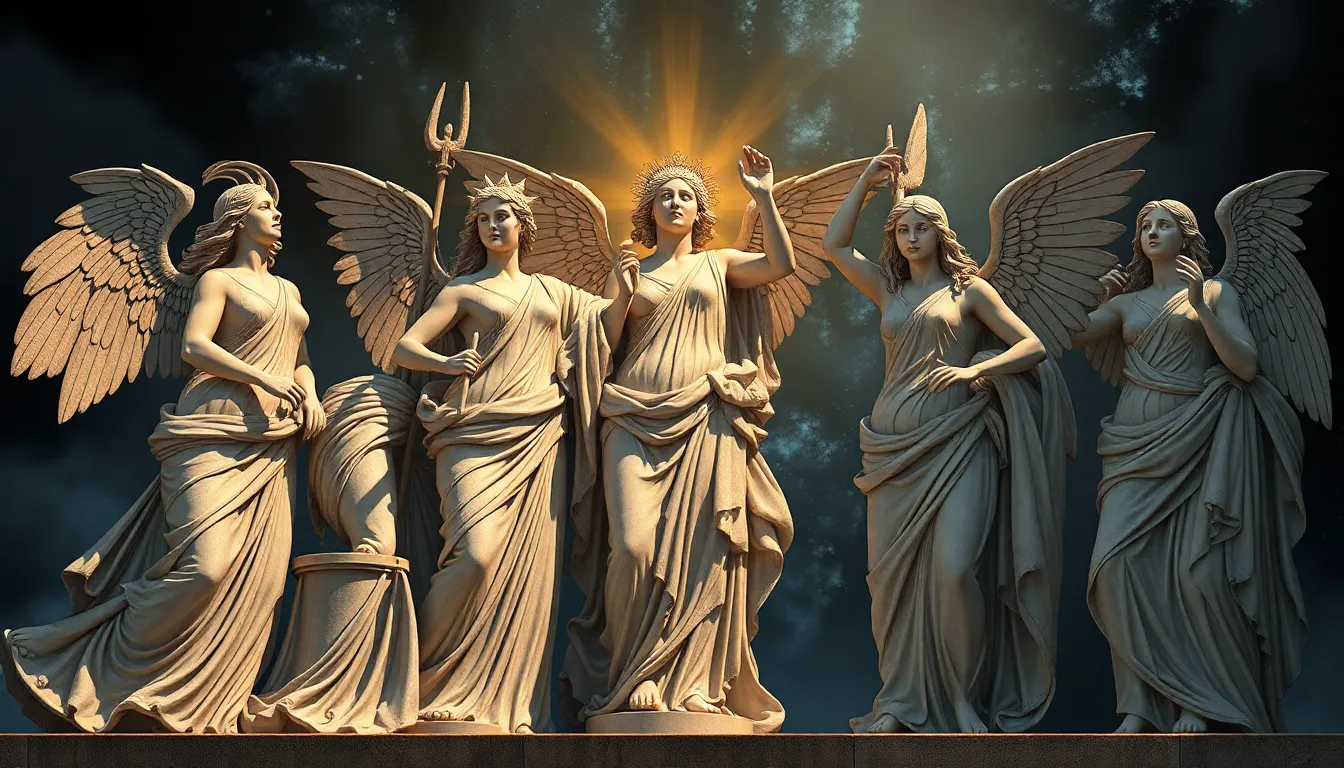The Muses and Their Influence on the Art of Public Speaking
I. Introduction
The Muses, in Greek mythology, are the goddesses of inspiration in the arts and sciences. Traditionally, there are nine Muses, each representing different domains of creativity, including poetry, history, and music. They played a crucial role in inspiring artists, poets, and thinkers, acting as divine sources of creativity and knowledge.
Their influence extends beyond the arts, permeating various aspects of human expression, including public speaking. This article explores how the Muses influence public speaking through inspiration, emotional connection, and the art of storytelling.
II. Historical Context of the Muses
The Muses originated in ancient Greece, where they were revered as the patrons of various artistic endeavors. Each Muse was associated with specific forms of artistic expression:
- Calliope – Epic Poetry
- Clio – History
- Thalia – Comedy
- Melpomene – Tragedy
- Terpsichore – Dance
- Erato – Lyric Poetry
- Polyhymnia – Sacred Poetry
- Urania – Astronomy
- Cheerful – Ephemeral Arts
Throughout history, the Muses have served as symbols of artistic inspiration across cultures, embodying the belief that creativity is a divine gift. The evolution of public speaking has seen the integration of these Muses’ attributes, enhancing the effectiveness and artistry of speeches.
III. Individual Muses and Their Relevance to Public Speaking
Each Muse embodies unique qualities that can significantly enhance public speaking:
A. Calliope – The Muse of Epic Poetry
Calliope inspires speakers to craft compelling narratives. Her influence on narrative structure allows speakers to engage their audience through well-organized and memorable storytelling. Epic poetry’s grand style encourages speakers to elevate their language and themes.
B. Clio – The Muse of History
Clio emphasizes the importance of storytelling in speeches. Historical narratives provide context and relevance, enabling speakers to connect past events to contemporary issues. The use of anecdotes and historical examples can significantly enhance the persuasiveness of a speech.
C. Thalia – The Muse of Comedy
Thalia reminds speakers of the power of humor in engaging audiences. Comedy can break the ice, create a relaxed atmosphere, and make messages more relatable. A well-timed joke or humorous anecdote can transform an ordinary speech into a memorable experience.
IV. The Role of Inspiration in Public Speaking
The Muses serve as vital sources of inspiration for speakers. Here are some ways to harness their creative energy:
- Engaging in artistic practices such as writing, painting, or music can stimulate creativity.
- Studying the works of great orators and artists can provide insights into effective communication strategies.
- Reflecting on personal experiences can cultivate a unique voice and perspective.
Numerous famous speeches have been inspired by the Muses, capturing the imagination of audiences and leaving lasting impacts. For example, Martin Luther King Jr.’s “I Have a Dream” speech embodies the poetic inspiration of Calliope, while incorporating historical references that Clio would applaud.
V. Emotional Connection and the Muses
Emotional resonance is a cornerstone of effective public speaking. The Muses evoke emotions through their artistic expressions, allowing speakers to connect deeply with their audiences. Techniques to achieve this include:
- Utilizing personal stories that evoke empathy and understanding.
- Incorporating evocative language and imagery that resonates emotionally.
- Understanding the audience’s emotions and tailoring the message accordingly.
By channeling the emotional depth associated with the Muses, speakers can create powerful connections with their audiences, ensuring their messages resonate long after the speech has ended.
VI. The Art of Storytelling in Public Speaking
Storytelling is a fundamental rhetorical tool that enhances public speaking. The Muses significantly influence narrative techniques, encouraging speakers to weave compelling stories into their presentations. The significance of storytelling includes:
- Engaging the audience’s imagination and emotions.
- Providing structure and clarity to complex ideas.
- Creating memorable moments that linger in the audience’s mind.
Case studies of effective storytelling in public speaking include Steve Jobs’ commencement address at Stanford University, where he skillfully used personal anecdotes to convey powerful messages about following one’s passion and embracing failure.
VII. Modern Interpretations of the Muses in Public Speaking
The relevance of the Muses in contemporary public speaking environments remains strong. Today’s speakers draw from the Muses for inspiration, often integrating technology and the arts into their presentations. This includes:
- Using multimedia elements to enhance storytelling.
- Engaging with audiences through social media platforms to share ideas and gather feedback.
- Incorporating diverse artistic expressions into speeches to reach broader audiences.
The fusion of traditional public speaking techniques with modern artistic interpretations has created dynamic speaking environments that honor the influence of the Muses.
VIII. Conclusion
In summary, the Muses have a profound influence on the art of public speaking. Their inspiration, emotional resonance, and storytelling prowess enhance the effectiveness of speakers across generations. The lasting legacy of the Muses continues to inspire both speakers and audiences alike, reminding us of the importance of creativity and inspiration in communication.
As we embrace the qualities embodied by the Muses, we can elevate our public speaking skills, ensuring that our messages are not only heard but also felt and remembered.




